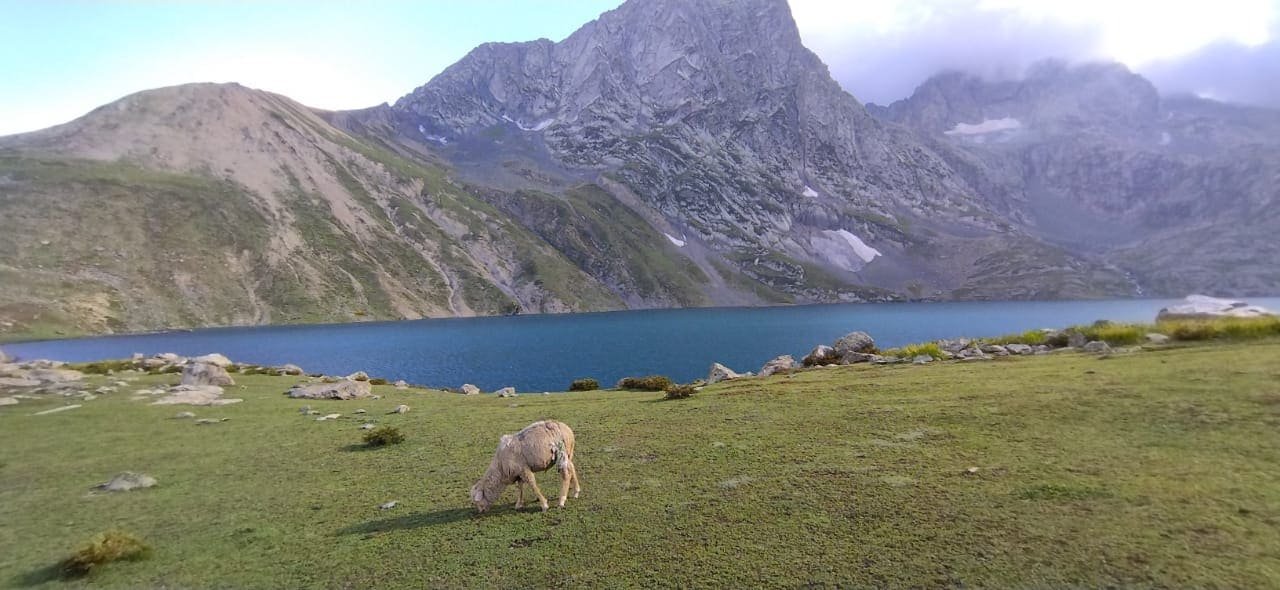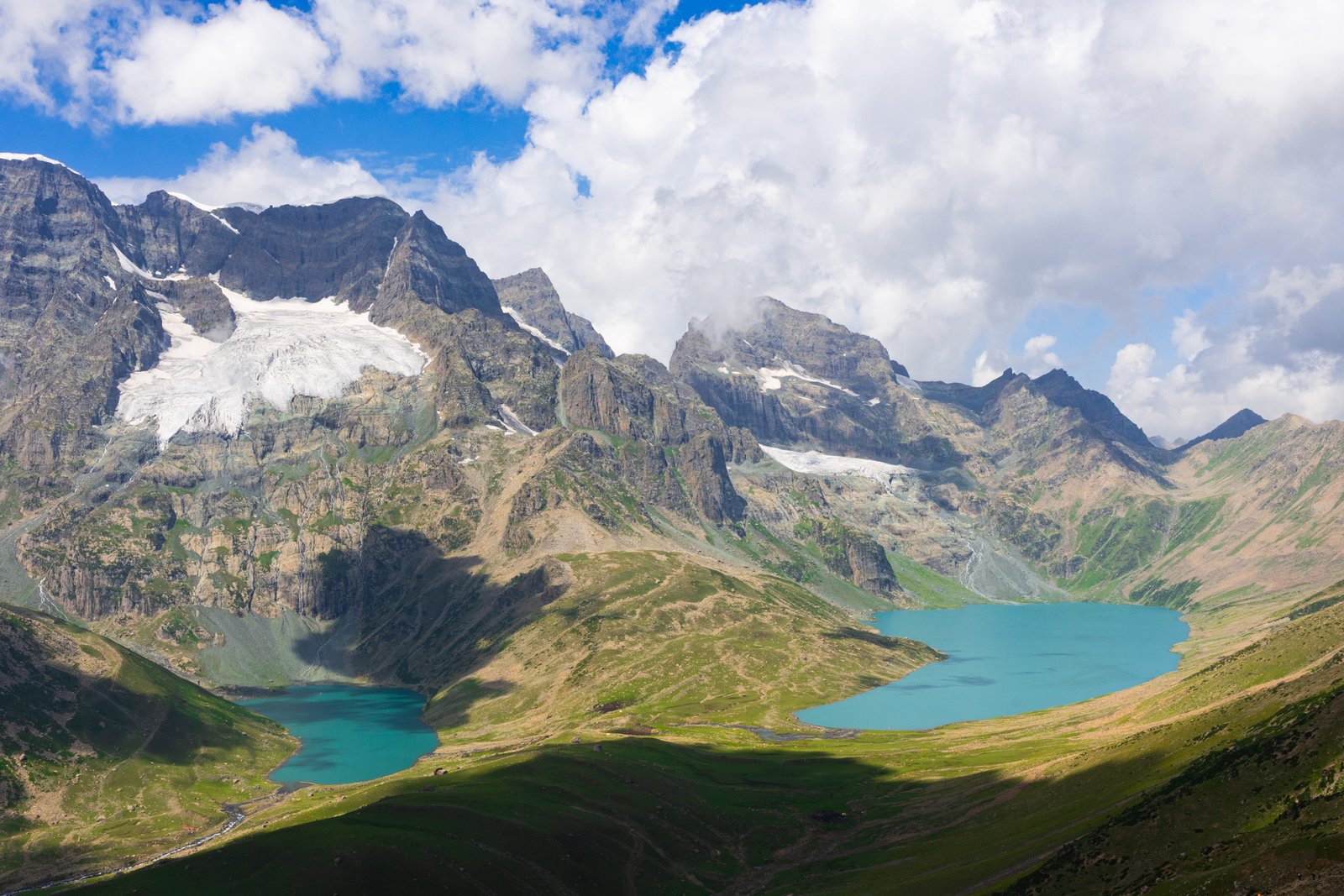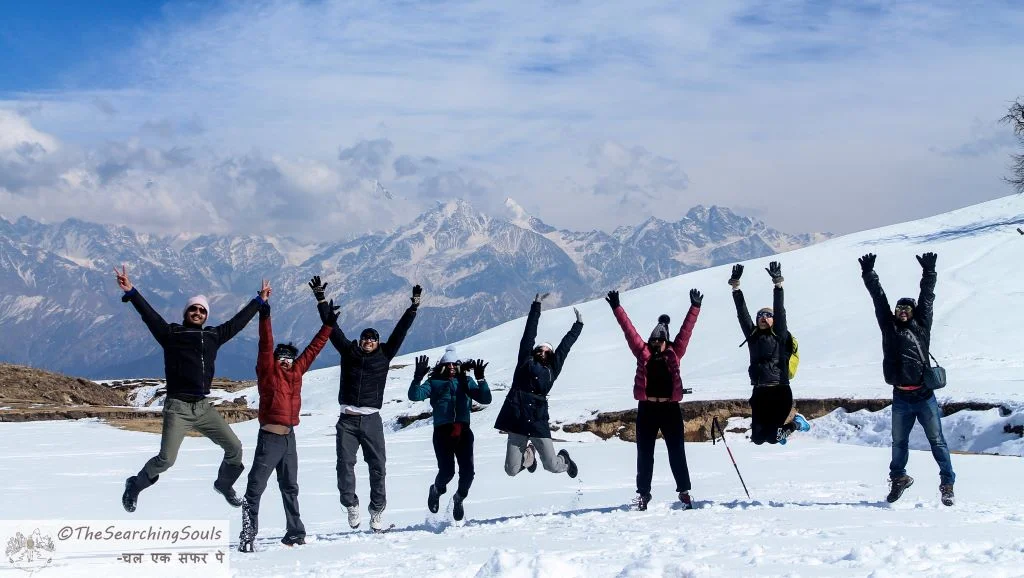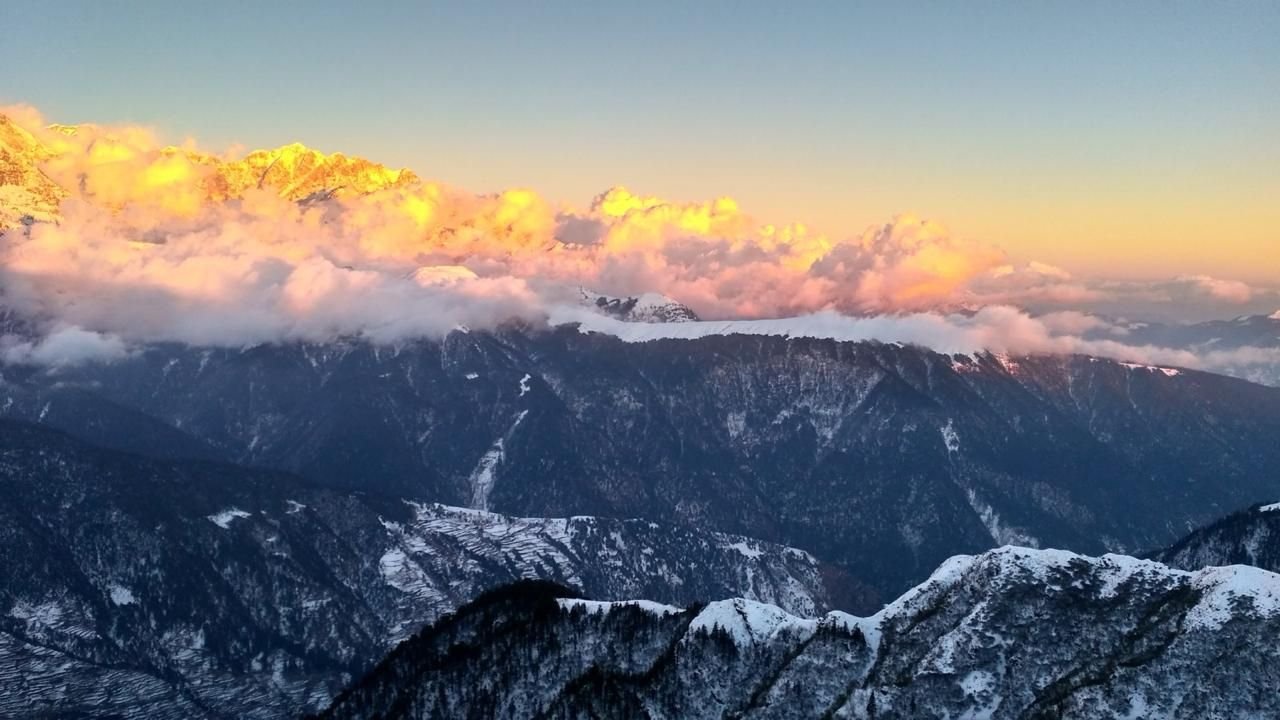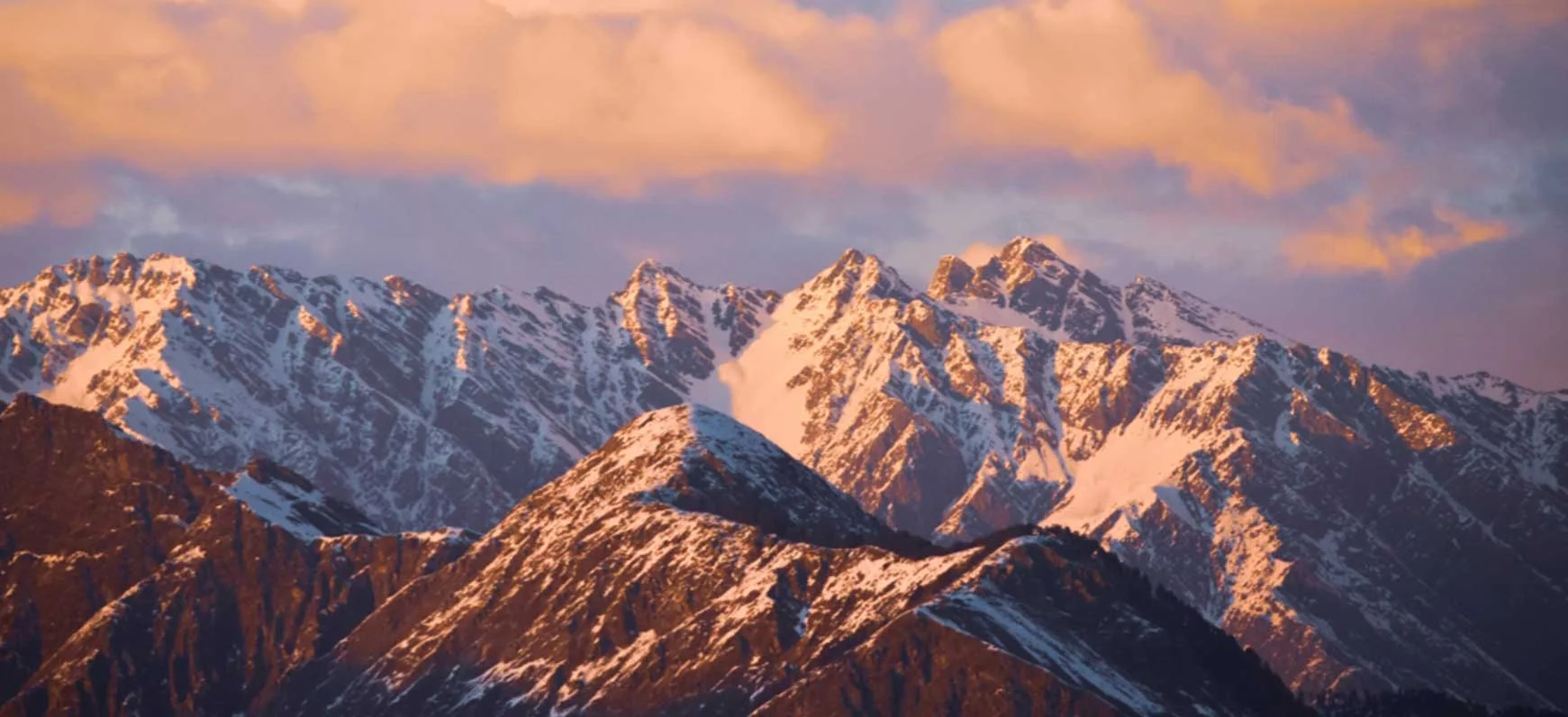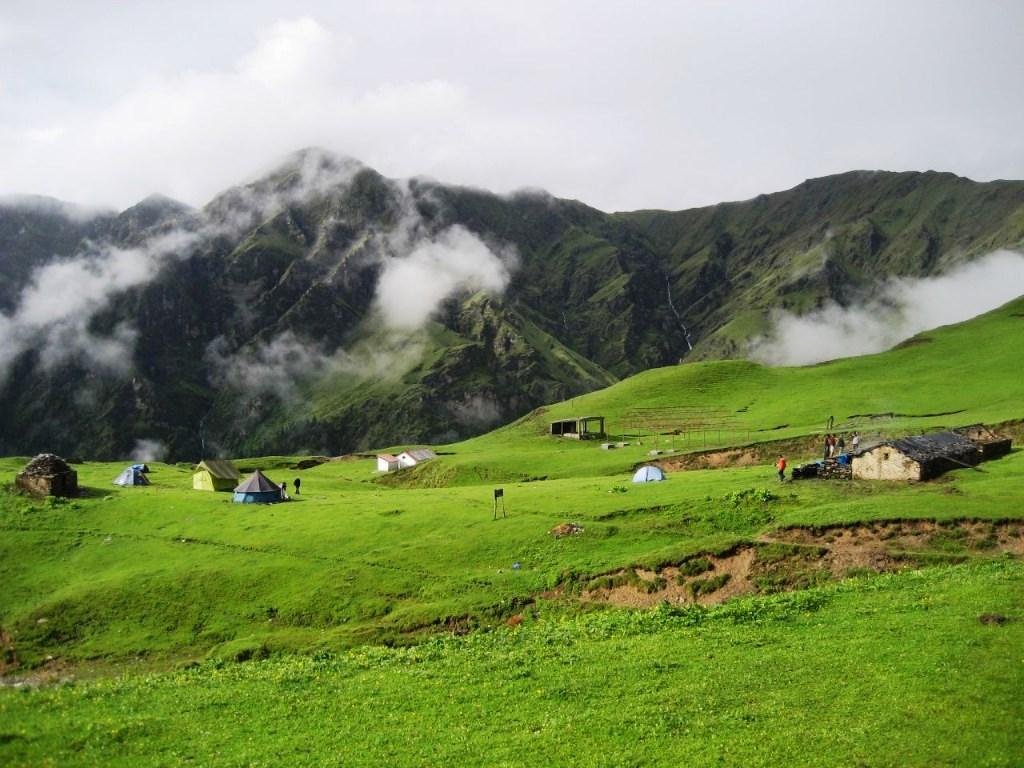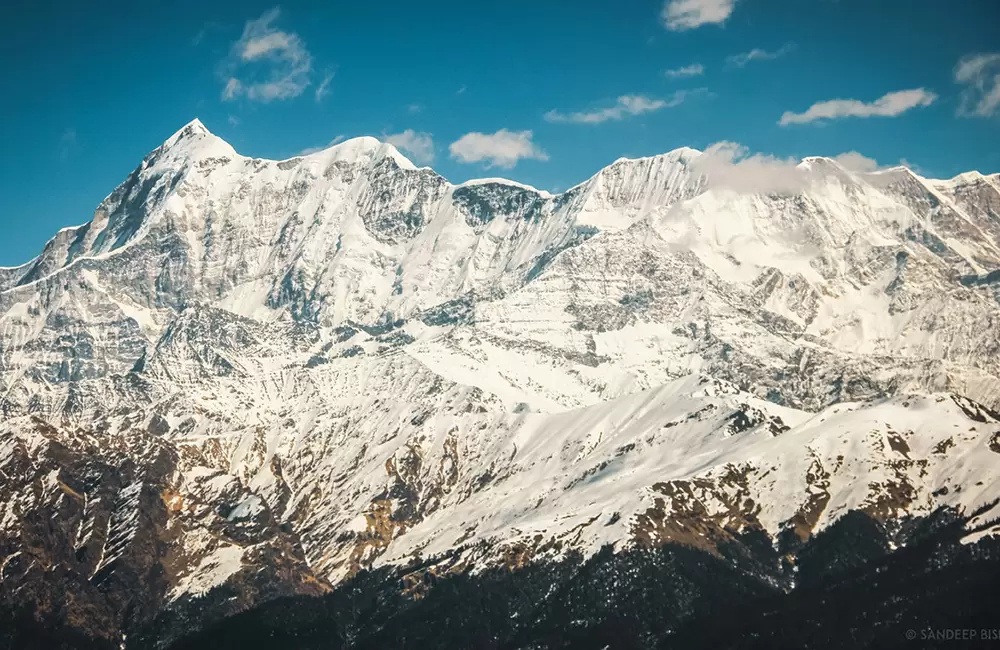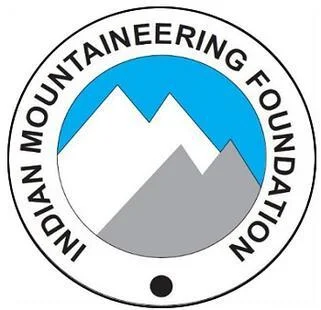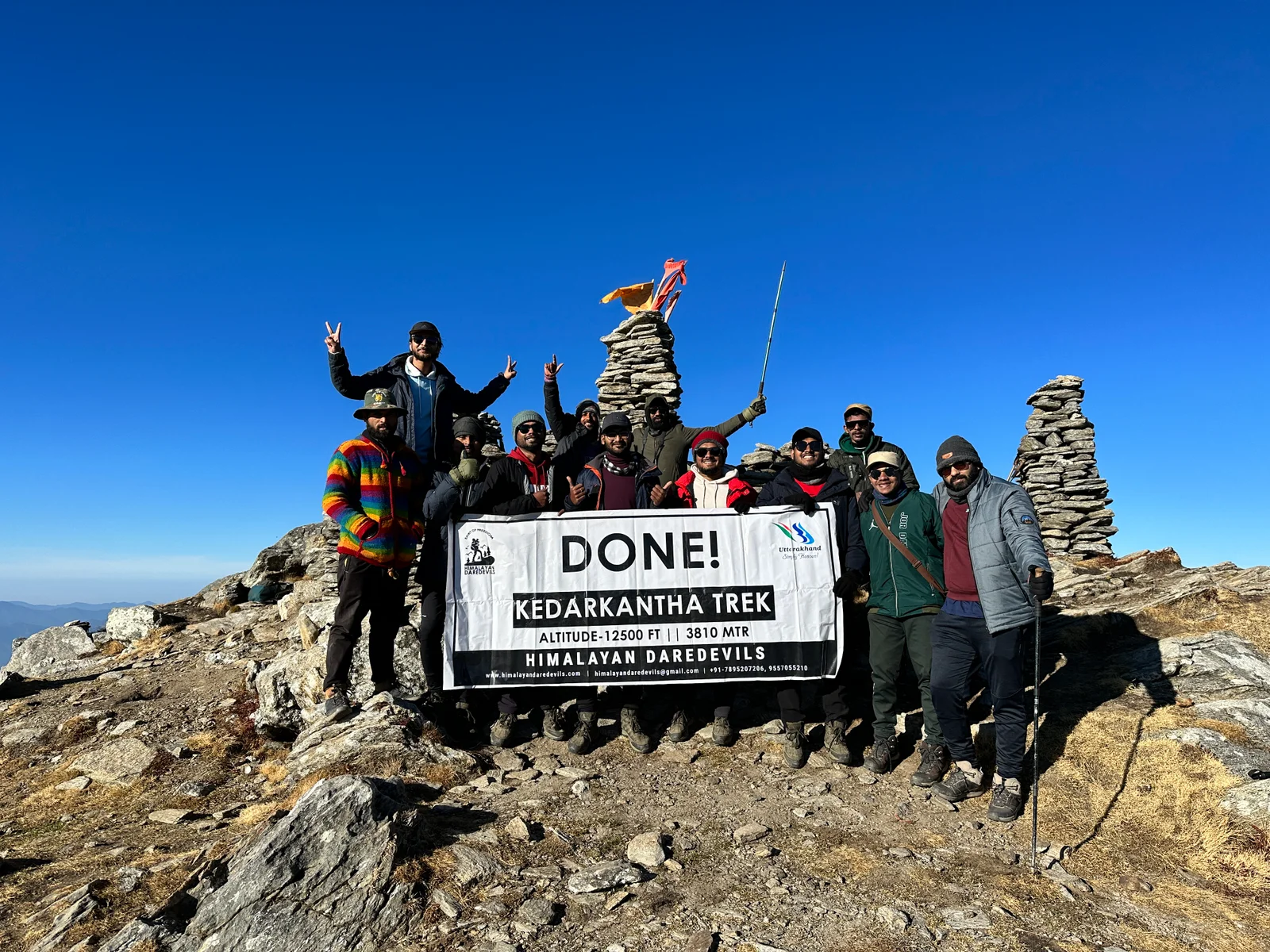18 June 2025
Trekking the Kashmir Great Lakes is a beautiful experience, you get to spend a week in the remote Himalayas of Kashmir and get to see the seven beautiful lakes tucked between the snow capped mountains. The altitude and the remoteness of the KGL trek adds to its charm but it also makes it very important for you to venture to this trek properly equipped with the right gear to ensure safety, comfort and enjoyment.
Understanding the Weather & Terrain of the KGL Trek
Spanning 70 to 75 kilometers from Sonmarg to Narang, In the 6 to 8 day trek the Kashmir Great Lakes trek shows you the variety of terrain that the Himalayas have to offer. From steep ascents, rocky terrains to river crossings and snow patches, the KGL trek has it all making it a must to be prepared for every terrain and every challenge that comes your way.
The Terrain
The trek begins with the lush pine forests welcoming you, as you move deeper into the forest you find green meadows that seem to expand to the horizon and in the distance you see the snowy mountain peaks.
The Trek gives you an opportunity to camp beside pristine lakes like Vishansar, Gadsar and Gangbal, each more beautiful than the next. In their glacial water you will see the reflection of the mountains that surround them and the twinkling stars above.
On the Great Lakes Trek you will also get to see lush green Alpine Meadows and expansive green pastures, especially around Nichnai, Vishansar and Gangbal.
The ricky sections and boulders you encounter around Gadsar Pass and Zaj Pass will challenge you. You will need shoes with good grip to climb them.
Trek also includes Mountain Passes, the highest one being at a height of 13,000. During the colder seasons you may find snow patches near the passes.
The Weather
Here is the table of the weather conditions you will find on the KGL Trek in different months:
Must-Have Trekking Gear for the Kashmir Great Lakes Trek
The scenic Great Lakes Trek, as we saw, comes with many challenges because of the variety of terrain and unpredictable weather. These challenges can be dealt with if one has the right gear for specific terrain. Here are the must have trekking gear for the KGL Trek:
Clothing: Layer Smart, Trek Safe
The weather in Kashmir can change rapidly. Dressing in layers ensures you stay warm, dry, and comfortable across elevations.
Base Layer (Thermal Innerwear) – Moisture-wicking top and bottom to retain body heat.
Insulation Layer (Fleece Jacket / Down Jacket) – For cold mornings and evenings at high camps.
Outer Shell (Waterproof Windcheater / Rain Jacket) – Protects from wind, rain, and unexpected snow.
Trekking Pants (Quick-Dry) – Lightweight, breathable, and stretchable for long walks.
T-Shirts (Full-sleeve + Half-sleeve) – Quick-dry fabric; full sleeves help avoid sunburn.
Warm Cap + Sun Hat – A woolen beanie for cold and a wide-brim hat for sunny trails.
Gloves (Waterproof + Fleece Inner) – Essential for warmth during chilly mornings and evenings.
Socks (Woolen + Synthetic) – Carry at least 4–5 pairs, mix of warm and quick-dry.
Buff / Balaclava – For face and neck protection against cold and dust.
Footwear: For Long, Rugged Walks
Your feet carry you through rocky trails, alpine meadows, and river crossings – invest in comfort and support.
Trekking Shoes (Ankle-high, Waterproof) – Sturdy grip, ankle support, and water resistance are essential.
Camp Sandals / Floaters – For evenings at camp and letting your feet relax after long walks.
Gaiters (Optional) – Protects from mud, snow, and small rocks entering your shoes.
Backpacks: Carry Right, Walk Light
A well-fitted, comfortable backpack will save your shoulders and back on multi-day hikes.
Main Trek Backpack (50–60L) – With padded straps, hip belt, and rain cover.
Daypack (15–20L) – Useful for short acclimatization hikes or rest days.
Dry Bags / Packing Cubes – To organize your gear and keep essentials waterproof.
Sleeping Essentials: Rest is Recovery
Cold nights demand reliable insulation – never compromise on sleeping comfort.
Sleeping Bag (Sub-zero Rating) – Must be warm enough for temperatures below 0°C.
Sleeping Mat / Inflatable Mattress – For insulation from the cold ground.
Pillow (Optional / Inflatable) – Small luxury for a good night’s sleep.
Trekking Gear: Tools for Tough Terrain
These essentials help navigate tricky trails and support your body throughout the trek.
Trekking Poles (Pair) – Greatly reduce stress on knees during steep ascents/descents.
Headlamp with Extra Batteries – For early morning starts and navigating around camps.
Water Bottles / Hydration Bladder (2–3L) – Stay hydrated across long stretches.
Microspikes (Optional) – May be needed if early snow is present.
Sunglasses (UV Protected) – Essential at high altitudes to avoid snow blindness.
Personal Hygiene & Health: Stay Clean, Stay Healthy
Basic hygiene can prevent altitude sickness, infections, and discomfort.
Toiletries (Biodegradable Soap, Toothbrush, Toothpaste)
Sunscreen (SPF 50+) + Lip Balm (For sun protection at high altitudes)
Quick-Dry Towel
Toilet Paper + Wet Wipes
Hand Sanitizer & Face Wipes
Menstrual Hygiene Products (if needed)
Small Mirror + Nail Clipper
First-Aid & Medication: Prepare for Emergencies
Altitude, weather, and exhaustion can cause health issues. Be ready.
Personal Medication (Prescription + Emergency)
Basic First-Aid Kit – Band-aids, antiseptic cream, crepe bandage, ORS, painkillers.
Diamox (Consult Doctor) – For preventing AMS (Acute Mountain Sickness).
Blister Kit – Moleskin, antiseptic wipes, and blister patches.
Insect Repellent (Optional)
Gadgets & Electronics:
These compact tools will add convenience, safety, and a bit of comfort to your Kashmir Great Lakes Trek.
Smartphone (with offline maps) – For navigation using apps like Maps.me or Gaia GPS when there’s no signal.
Power bank (10,000–20,000 mAh) – Keeps your phone, headlamp, and other gadgets charged for several days.
Rechargeable headlamp – Hands-free lighting for trekking in low light or moving around camp at night.
Camera / action cam – To capture high-quality photos and videos of the stunning landscape.
Portable solar charger (optional) – Backup charging option if you're carrying multiple devices and have good sun exposure.
Earphones / lightweight Bluetooth speaker – For relaxing with music or podcasts during downtime.
Digital or altimeter watch – Useful for tracking altitude, time, and weather shifts on the trail.
Offline entertainment (books, podcasts, movies) – Great for winding down at camp after a day of trekking.
Miscellaneous: Small Items, Big Impact
These are often overlooked but make a huge difference during the trek.
Notebook + Pen – For journaling your trek memories.
Plastic Ziplocks / Garbage Bag – Keep wet or used clothes separate.
ID Proof + Photocopies – Required for registration at basecamp.
Common Packing Mistakes to Avoid
Avoid these frequent errors to ensure a smoother, safer, and more comfortable trekking experience.
Overpacking clothes – Carrying too many layers or spares adds unnecessary weight; focus on quick-dry and layered essentials.
Ignoring waterproofing – Not using rain covers or dry bags can ruin gear and clothes during sudden showers.
Carrying new or untested shoes – New shoes often cause blisters and discomfort; always break them in beforehand.
Skipping warm layers – Even in summer, high-altitude nights are cold; underestimating this can lead to hypothermia risk.
Bringing bulky towels or sleeping gear – Use compact, quick-dry towels and lightweight sleeping bags to save space.
Packing without organization – Not using packing cubes or dry sacks makes it hard to access essentials quickly.
Forgetting altitude-related medication – Not carrying AMS preventive meds like Diamox (after consulting a doctor) can be dangerous.
Relying on a single power source – Only bringing one power bank or charger can leave you with dead devices mid-trek.
Not carrying ID and permits – Mandatory at basecamp and for forest/army checkpoints; keep photocopies too.
Neglecting sun protection – Missing sunglasses, sunscreen, or a hat can lead to sunburn and even snow blindness.
Conclusion
Packing smart is just as important as training for the Kashmir Great Lakes Trek. The right gear keeps you safe, comfortable, and prepared for the unpredictable environment of these beautiful mountains, while avoiding common mistakes ensures your energy is focused on the breathtaking journey—not easily preventable problems. Prioritize essentials, stay organized, and remember: every item in your backpack should earn its place. With thoughtful preparation, you’ll be free to fully enjoy the pristine alpine lakes, dramatic ridgelines, and unforgettable beauty of this Himalayan adventure.


